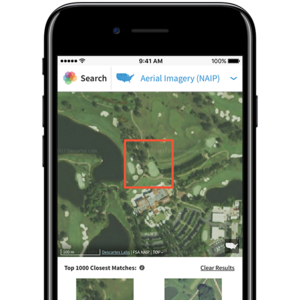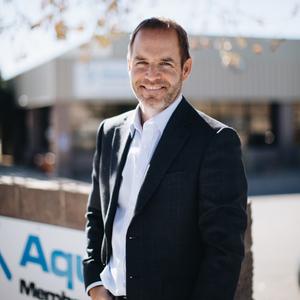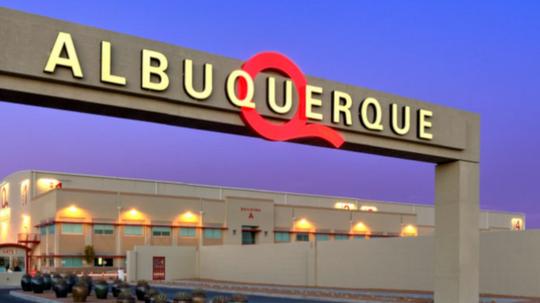
STEVE CHAVEZ: Welcome, everybody. I’m Steve Chavez. I’m the managing partner for MDS Investments.
It gives me great pleasure to introduce this table of experts and moderator today. On behalf of Mesa Del Sol, I want to thank our panelists for the participation and their expertise.
New Mexico is truly on the cusp of great advances in developing its broadband network throughout the state and in bringing to life the innovations found in Smart Cities. Here at Mesa Del Sol, we are working on some tremendous opportunities to model what a Smart City does and to install and celebrate the broadband infrastructure that makes such an advanced community possible. Here are our experts.
First, I want to start off with Senator Michael Padilla. Senator Padilla has been the author and proponent of significant legislation to bring robust broadband networks and infrastructure throughout the State of New Mexico. In 2021, he brought a bipartisan group of legislators together from both legislative chambers to create the New Mexico Office of Broadband Access and Expansion, which has six primary functions and will help New Mexico be a leader in this critical area. Thank you, Senator.
Peter Ambs, former CIO at City of Albuquerque, current AVP IT Division at Lovelace Health Systems. Mr. Ambs is an information technology professional, currently leads technology initiatives for the Lovelace Health Division of Ardent Health Services.
Prior to this, Peter was the Chief Information Officer for the City of Albuquerque for seven years. He has years of local and national experience on the growth and development of Smart Cities and the expansion of broadband.
Dale Dekker, architect, Dekker/Perich/Sabatini. A life-long New Mexican, Mr. Dekker is a well-known architect and planner. He is frequently called upon for advice to public officials and to give presentations on the developing urban landscape for smart cities and the needed information infrastructure. In addition to his expertise in developing smart cities, he is an investor in, and proponent of New Mexico’s aerospace and bioscience industries. He is also a mentor of mine. If you look at Mesa Del Sol, a lot of this isn’t here just because of what we are putting together but it’s happened from generations of architects, engineers, politicians who actually put this together and Dale was a key component of that. Thank you, Dale.
David S. Campbell, CEO, Mesa Del Sol, LLC. Mr. Campbell is a real estate attorney and retired diplomat who has also served as the City of Albuquerque’s Planning Director, City Attorney, and City Manager. As Planning Director, he worked to expand Albuquerque’s broadband network, implement smart city applications, and develop an Intelligent Transportation System hub.
Currently the CEO of Mesa del Sol, Mr. Campbell is committed to bringing smart city and robust broadband applications to this growing community. David has been instrumental in everything that we’re doing here for Mesa Del Sol.
KEITH DENNIS: Thank you, Steve, and thank you to Mesa Del Sol for hosting this table of experts. Really excited to have this conversation about Smart Cities, the extension of broadband. Since I moved here in October, I’ve heard so much about the importance of it, specifically around education, Coronavirus and what that means for virtual settings.
Let’s jump right into the questions. How do you define a Smart City? What are the characteristics and functions of a Smart City? I want to start with you, Dave.
DAVID CAMPBELL: A Smart City is an urban area that collects data, analyzes that data, and then uses the data for some purpose. It really is a neural network of a city that is essential in the 21st century.
PETER AMBS: I would refer to it as becoming a responsive city. We know what the data knows. For example, the ability to collect data through IOT sensors that are going to be placed throughout the city. The data can be processed at the edge where the information is needed that can be turned into information that can be used for smart traffic analysis, public safety, environmental type of capabilities. That really runs the gamut of what we can do in a Smart City with sensors. It is all going to be fueled by 5G and advanced wireless networks that are all going to require a robust fiber network to support that.
SENATOR MICHAEL PADILLA: A Smart City can also be considered a truly connected city. A connected city, from a political leadership standpoint, is where we are always looking for things that connect economic development and job creation, higher education, distance learning, and obviously, telehealth and telemedicine.
Wrapped around that is an immense amount of data that can be pulled together to understand where to find employees from a company that may want to come to New Mexico. How can we support existing businesses that are here right now with all of that data? Putting those three critical elements together – economic development, education, and healthcare – is truly one of the ways we can create smart cities in New Mexico.
DALE DEKKER: I want to kind of back off and look at the big picture here: Why would you want a Smart City?
Smart Cities are all about efficiency, the world that we’re moving into with climate change, and some of the global pressures that are being put on urban areas. The smarter our cities are, the more efficient they are. The easier it’s going to be to achieve sustainability development goals. For a place like Albuquerque, what does that mean? That means that we’re going to have smart water systems, we’re going to have smart electricity on-demand, and we’re making the most efficient use of our electric grid.
I think we’re moving into a whole new era of city planning, and one of these days, probably in our lifetime or in just 10 years, traffic signals might not even be in existence because cars will be talking to each other.
I think what Peter mentioned as far as ubiquitous connectivity of sensors, smart sensors are going to be the key. A place like Mesa Del Sol, what a great opportunity to implement and use this as a testbed for other cities around our state as well as Albuquerque.
SEN. PADILLA: I think it is going to also bring additional economic development opportunities to New Mexico that we’re not thinking about right now. We passed a piece of legislation this year – which I sponsored – to bring autonomous vehicle testing to our roadways here in New Mexico. If we can get that off the ground quickly enough, there will be secondary and tertiary benefits, jobs, companies, and the creation of new technologies that are going to come from that as well. But, you’re not going to have that without a Smart City that has the sensors in the ground and the potential for wireless redundancy, in addition to terrestrial redundancy.
CAMPBELL: Let me say one other thing, and that is, we also need people who are visionaries and who are leaders who can see beyond the horizon, and Senator Padilla has been that in the state legislature in making sure that we’re ready for that connected future.
We need leaders like Dale Dekker in urban architecture so that we can be building and planning this before it’s actually built. We need folks like Peter Ambs who is already in this, on a municipal and healthcare basis. Talented human capital is required to make these Smart Cities.
DENNIS: How does the extension of broadband relate to creating a Smart City? Why is it so important?
SEN. PADILLA: Everything that you’ve heard today is not going to happen without a strong, robust, broadband network here in New Mexico. I came to the legislature nine years ago and have been beating this drum the whole time.
We have about 17 different agencies trying to deliver broadband. So, I thought, “Why don’t we put our heads together, eliminate all of the clutter, and create one Office of Broadband Access and Expansion?”
Nothing will happen in state government unless you’re coming through that office and it’s going to have six critical functions. I had to really think about a year and a half, almost two years, on how to establish this office responsible for New Mexico’s broadband plan.
First, we’re going to have a business plan; second, we’re going to have a financial plan. The third thing that the office is going to have is access to rights-of-ways and easements.
They’re all going to be deposited there, so, rather than trying to take broadband from Albuquerque to Gallup and having to interact with 300 different government entities, agencies, or associations along the way, we’ll have everything in one place.
The fourth function of the office is going to be a ton of reporting and analysis to the people of New Mexico, to the governor, and to the legislature. What are the upload speeds, download speeds, you name it? The fifth function that the office is going to have is an individual responsible for leveraging our New Mexico dollars. The last and sixth function is going to be a group of specialists responsible for writing a broadband plan for towns throughout the state.
This year, we’ve allocated $130 million for broadband here in New Mexico. We believe that by putting this office in place, and because of what just happened with the infrastructure bill, we’re going to be able to leverage that $130 million to $970 million and truly make an impact here in New Mexico.
In addition to creating the Office of Broadband Access and Expansion, we also rewrote all of our telecommunication laws – took me three years to do that with a group of people. And what we said was: Let’s take all the clutter out after a small, medium, and large telecom company who wants to invest in New Mexico and measure them all the same.
Now, New Mexico looks a lot more attractive that way. We have a USF fund that we all pay on our cell phone or telephone bills. Well, that goes somewhere, and as it turns out, 90 percent of those dollars were going to dying technologies, such as plain old telephone system lines. I flipped that script and said, “Okay, let’s put that USF Fund toward broadband or new technologies only so we have another pot of money that we can leverage.”
Then, I put broadband in the local infrastructure. Broadband is a waterline, whether it’s a telephone or a road, a sidewalk, a lighting system, a sewer system, a water system, you name it. What you have now is you have broadband as though its infrastructure.
DEKKER: I think what Michael’s talking about is the need for efficiency at all levels, be it government, private sector, and public sector, all working together. It really is a private/ public partnership that you’re talking about in order to move this in. Because if you don’t have efficient systems on the front end, the world is going to pass us by.
New Mexico has a history of “speaking with one voices”. But if we can focus in on a system, a one-stop shop system that really allows business, and the world as we know it, to go to a single source to get things done efficiently, it is going to make Smart Cities that much more possible.
SEN. PADILLA: We’re not the Texas Enterprise Fund. The Texas Enterprise Fund gives a governor the authority to sign a check up to $285 million a pot to bring a company to their state. We don’t have that. So, what we really need to do is be smart about how we spend our dollars and that is one of the ways to do it.
AMBS: I would say, Senator, you hit the nail on the head at the very beginning when you mentioned connectedness. If you had to encapsulate what broadband means and to be a Smart City, it’s connectedness.
Broadband connects people to resources, and we have to have that type of thinking as we’re moving through this process because that’s where the digital equity capabilities are going to help in getting broadband into certain neighborhoods. For example, connecting people to the resources that they need to prosper, to be healthy, and to be educated. It’s all going to require this fiber network.
It’s going to require robust fiber, the transport, the middle mile, the last mile, the ISPs all working together to bring this all into fruition that we need to see, not only in Albuquerque but in our state.
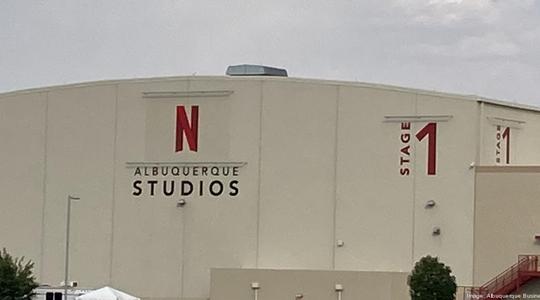
SEN. PADILLA: One thing that we have that is a huge challenge here in New Mexico, and it’s another great thing about Mesa Del Sol and the work that they’re doing up here, is the state’s topography.
So, we have some creative lunar solutions. We have some just above-the-cloud solutions. We have some terrestrial solutions, but all of that doesn’t matter if we don’t have the last mile covered.
That is why a community that’s very well thought out and very well planned, like a Mesa Del Sol, is very important in this matter because it will reduce that last mile cost, and that’s really where the big cost comes in.
DENNIS: And at that point you’re too late.
SEN. PADILLA: Right. Then you have to tear everything up, so why not just do it right to begin with? That is what they’re doing at Mesa del Sol.
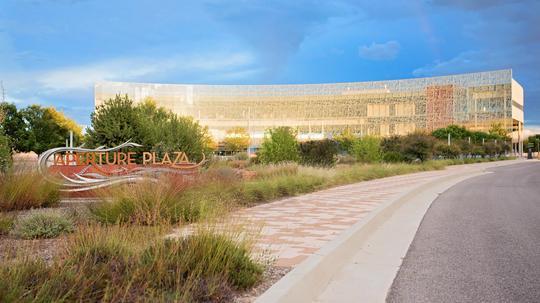
DENNIS: Can the extension of broadband throughout New Mexico enhance the business environment and assist in bridging the digital divide that we always hear about?
CAMPBELL: When we talk about digital divide, we’re talking about equity and how different communities need really the same thing. We saw this with the pandemic most recently where all of a sudden, in fact, overnight, we had to provide homeschooling for people that had no internet connectivity. That’s why the extension of broadband throughout the state on a very robust basis is so incredibly important to bridging that gap. It is a way of attacking poverty, it certainly is. For us here at Mesa Del Sol, making sure that we have ubiquitous access to broadband at every level for the residences, as well as for the businesses, is critically important.
DENNIS: Absolutely. Peter, I’m curious to hear from your telehealth perspective. With the high level of telehealth we have in our rural state, especially during the coronavirus pandemic, what do you foresee for the role of telehealth relating to broadband, and how can that help from a Smart City perspective?
AMBS: Certainly. We call it “hospital without an address” or “healthcare at any address.” That’s all done through telemedicine and telehealth. And there’s actually a difference between telehealth and telemedicine.
Telehealth is this overreaching term that includes doctor-to-doctor communication. For example, a specialist here in Albuquerque can connect with a doctor in Chama, New Mexico, for neurology or cardio-oncology or some emergent situation where a doctor needs to talk to another doctor for their patient. That kind of doctor-to-doctor communication needs to be spun up immediately. And in order to do that, we’ve got to have robust broadband.
Telemedicine is really virtual care. That’s your ability to connect with a doctor online using your phone, setting up appointments and getting consultations in a very fast and quick way. Your ability to have an urgent care visit through telemedicine is about connecting the healthcare provider with a patient over broadband. There’s also the storing of imaging, whether it’s a CAT scan, an MRI, an echo, or an x-ray.
The ability to ship these case files or video files from hospital to hospital requires robust broadband.
If you don’t have broadband or if you can’t afford it, you’re missing out on all that healthcare capability. That is a big piece, and I’m glad that we’re going to be able to address that through some of these upcoming broadband initiatives.
DENNIS: I see this being huge for the future of healthcare. It’s so important for states like New Mexico that have a lot of rural communities. It eliminates the excuse of, “Oh, I don’t want to drive three hours to go to the doctor.”
AMBS: Healthcare organizations can’t afford to a put a specialist in a small town somewhere because they’re all here in Albuquerque.
SEN. PADILLA: About 40 percent of New Mexicans have never had a healthcare provider in their community ever. If you can bring broadband to those communities, you can also bring in some version of healthcare.
DEKKER: I think from a state economic development point of view, we have to have broadband. We have to have 5G. If we don’t, we’re going to be left in the dust. The states surrounding us are implementing that. It really is important for the economic health and welfare of our rural communities.
I think we learned from the pandemic that working from anywhere is a distinct possibility. But if you’re in Magdalena, New Mexico, and you can’t connect to the global network, you’re not going to be able to move there.
SEN. PADILLA: If you can have broadband in Magdalena or Tres Piedras or Columbus, and you have the skill set, you can move back home to your family and completely expand the economy of that community – with even just one person! One person with the skill set and job paying them a salary of $150,000, and you’re seeing a lot of that. A lot of children who moved out of New Mexico are moving back with mom and dad now, and they’re teleworking and bringing those salaries to New Mexico.
It’s a really exciting thing. Money coming into our community and creating economic- based jobs.
CAMPBELL: Sometimes we think of these devices as being entertainment devices to stream movies or to FaceTime. But what I’m hearing from the panel is that these are also life-and-death devices needed to diagnose something timely, even if you’re very remote in New Mexico.
AMBS: In healthcare, not only did we send our call center agents home to work from remotely, but we have radiologists now reading studies at home. You have to have a 100-meg connection to do it, but the point being is that they don’t have to be sitting in an office in the hospital looking at images. They can do it from home now and that’s a huge productivity gain.
SEN. PADILLA: And employee satisfaction, too.
AMBS: Then another provider can do the consult with the patient, and the screen can all be done by a radiologist. All of this capability, the capabilities that we can provide now. Dale, you could run your company on that cell phone today.
DEKKER: Or it will run me. I don’t know.
DENNIS: What are some other desirable aspects of a Smart City, other than what we’ve just been talking about, that Albuquerque and the whole state should be looking forward to in 2021?
CAMPBELL: I’m kind of a municipal wonk. I like to look at the kind of services that cities are expected to provide and see how technology can enhance them, make them more efficient.
So, I’m going to talk trash. In the commercial world of picking up dumpsters, there is a sensor inside the lid of that dumpster that says, “I’m very full or I’m halfway full or I’m not full at all,” you can then create routes for your trucks that are much more efficient in knowing which dumpster to pick up first. The technology allows you to make those routes happen in a very efficient way.
We’ve already talked about some of the mobility issues. In Phoenix, Fry’s Grocery Store will deliver your groceries in an autonomous vehicle that rides on data, and it comes to your house and tells you that it’s there. Then you go out and pick up your paper bags. Those kinds of things are possible in a municipality with this level of technology.
SEN. PADILLA: Smart cities are crucial to transportation and affordable housing.
Housing that meets all levels of an economy. If I want to take an entry-level job in a company in New Mexico or telecommute for the other side of the planet, but I need to have a place to live. Maybe there’s a section that we look at from a Smart City standpoint that tells us, with all the data that we can collect, where to put some affordable housing units, where to put some medium-grade housing, and/or luxury homes, etc. You can gather a tremendous amount of data with all your economic data, your telehealth, your distance learning, all the stuff we’ve talked about so far.
DEKKER: If that data is used in a way to make a city more efficient, then the cost of living in that city should go down. Maybe that’s the value proposition that we have to sell to citizens: more efficient city means it’s less costly to live there.
It definitely would have less impact on the environment. We saw a tremendous drop in vehicle miles traveled as a result of people working from home and the impact of the pandemic, which has had a tremendous benefit to the environment.
As we say, “smart,” think about everything being smart – your smart water meter, your smart electric meter, your smart refrigerator, your smart dishwasher – we’re moving into that world.
I found a statistic that estimated that by 2035, there will be 45 trillion connected smart sensors globally. That’s 5,000 sensors per human being on earth. If we want to find out where the best place to grow chile is, besides New Mexico, there’s probably a sensor someplace.
SEN. PADILLA: And to know when to water it to be efficient.
DEKKER: It’ll be tied to smart weather systems. We will know when to water it and when to turn on that sprinkler system. We talk about living in a high desert and water as being one of the major issues. I think we’re going to extend the life of our community and our water systems by generations through smart systems which help in the design of a city. These are all linked ubiquitous systems working together to make life better for its citizens.
AMBS: Let’s talk about intelligent traffic systems for a second. The idea of sustainability and what is happening today in our cities.
Once in a while, believe it or not, I go to the gym in the morning, and I get up really early and it’s still dark out. I’m sitting at a traffic light. I know that thing is going take two minutes for it to turn green. The intersection is San Ildefonso and Montaño.
There are no other cars. I look both ways, there’s nothing happening. I’m the only one sitting there. I’m producing emissions into the environment.
When we get to vehicle infrastructure communication, vehicle-to-vehicle, that’s going to require 5G and LIDAR and other advance wireless capabilities. Those technologies are available today.
What will happen is we get adaptive traffic signaling. There are no other cars coming, you’re the one, boom, it’s green. That’s the type of intelligence we’re going to get when we can get to these really intelligent traffic systems and adaptive signaling, etc.
In order to get there, cities can start to offer up their resources. Who owns more buildings and infrastructure in a municipality other than government? They do. They own the streets, the utility poles, the street furniture, the bus stops. They own the rooftops for all these government buildings.
The easing of permitting and right-a-ways is huge so we can start to develop these public, private partnerships with government and the private communications carriers, etc.
They get to monetize it. There’s revenue share right back to the government so that they can then invest in other strategic programs. All of these things are things that we can do in municipalities to further advance our Smart City initiatives.
CAMPBELL: I like the sound of how these all link up nicely. Here at Mesa Del Sol, we say we are smart, sustainable, and safe. What we’re hearing is that by being smart, we can also be sustainable by regulating traffic in an appropriate way. For example, when the concert gets out at Isleta Amphitheater, we can smartly get people out three or four lanes going out, same coming in, so we can regulate and not have a bunch of traffic idling. Or, we can time the flow of traffic and the flow of food delivery and other services that come to town in a way that’s sustainable and that doesn’t use as much of the planet’s resources.
From a safety standpoint for sensors, there are gunshot sensors that will tell the police department immediately when something bad may have happened and that information can be analyzed someplace.
DENNIS: When we talk about improving the lives of city residents in a Smart City, something that we always talk about here, a hot topic, is crime. How do we see Albuquerque being positioned with Smart Cities and crime? How do we see this helping Albuquerque?
SEN. PADILLA: I truly believe that a Smart City lends itself to economic dominance and economic power, and it creates opportunity for folks so they don’t have to do other things to put food on the table and to make a living.
If we can use our Smart City strategy to create an economy that helps families succeed, then I think you’ll also see exponential reductions in crime.
There’s also, as David mentioned, the technology. We actually already funded the shotgun detection, by the way. You can take this technology and zero in to about a 300 square-foot area where a gunshot occurred. Then, you can send your law enforcement officials to that area as quickly as humanly possible from three different directions.
Where this has been implemented in other cities, it’s actually driven up the capture rate.
If we can create a Smart City that creates an economy, then the likelihood is that folks can pay the mortgage, or they can pay the rent. The kids are not being moved around all the time, so they know where they’re going to sleep at night. If a child does not know where they’re going to sleep at night, the last thing they’re going to focus on is their homework or if they even got to school that day.
Can I just talk at some point about public/ private partnerships? Just real briefly I’ll mention that. So we’ve kind of thrown around the public/private partnership quite a bit. I’ve had a bill to bring a public/private partnership and put it on the books here in New Mexico seven of the nine years I’ve been in the legislature. The one topic that brings everybody together is broadband.
So what I’ve done is I’ve got this bill, and I’d like everybody at the table to help me with this, by the way. It be really helpful is to get broadband public/private partnerships on the books, see how it goes for the State and operating public/private partnership and then we can expand it to other things like transportation, energy efficiency, or whatever.
So if you’re a company or a business wanting to come into New Mexico and expand in a broadband way versus New York. Where would you go? You’d go to New York. There’s probably a million people along a mile in downtown Manhattan up to northern New York. In New Mexico if you drive a mile between really Los Lunas and Belen, there’s more cows on those 10-miles than there are people.
From that standpoint, we need public/ private partnerships very badly to bring in that private investment.
DEKKER: What we’re really talking about here is that our whole state needs a 21st century business plan, which we don’t have. Right now, we’re dealing with pieces of a puzzle, but we haven’t developed the big picture on the impact that a new world’s going to face that’s going to cause New Mexico to change the way it’s done business in the past.
You hear about electric vehicles. Their adaptation is going to accelerate, which is going to greatly impact oil and gas revenues that come into the state, which has unintended consequences.
How are we going to fund the services and how is government going to generate the revenue to fund the services that are needed by our citizens? We need to think long-range here, and we have the opportunity to do that, but we need to make some bold moves fast or the world’s going to pass us by.
The internet of things, broadband, 5G, they’re all critical to the economy and the future, and if we don’t have it, we’re not going to attract the companies and businesses that are going to create great jobs, raise our per capita incomes, get us off the bottom of every bad list, and put us towards the top of the good list.
A good thing about New Mexico is that, even though we’re a large state in geography, we’re still a pretty small state. We can get things done when we put our minds to it, but we can’t take nine years to figure this out. We have to figure it out fast. That’s the urgency on the private sector working with the public sector, we can come together and paint a future vision for what our state looks like.
CAMPBELL: Peter has been on both sides of that divide in the public sector and now in the private sector in health. What do you see in those areas of public and private partnerships?
AMBS: I’m with the Senator. I would like to see that happen here in New Mexico for broadband. There’s another model that we haven’t talked about yet and that’s municipal broadband, and New Mexico is one of the number of states that does not have legislation on the books that bans or outlaws that.
Municipalities could take that upon themselves and create a broadband utility. Other cities have done that – Huntsville, Alabama; Fort Collins, Colorado; Lafayette, Louisiana. I mean, there are dozens of cities that are doing this because it’s just another opportunity for a municipality to bring broadband to its community members.
DENNIS: How has the COVID-19 pandemic impacted the rollout of broadband and its effect on Smart Cities? Has it slowed it down, is it speeding it up, or is it lighting the fire? How is it impacted?
SEN. PADILLA: I have never seen so much energy behind broadband from the people of New Mexico. It is really unfortunate what happened with this pandemic for the world and for our own people. But, I will tell you; I have been trying to get this done for nine years. I had a really great year in ‘17, and, now, fast forward to ‘21, and we had another great year this year.
Had the pandemic not occurred, I’m worried that it would have been probably another period of time before we could have gotten this done. This year put it front and center in our faces.
The thing is every child went home and had to get online to talk to their teacher. Little Joey at the end of the street started playing Minecraft and ate up all the broadband for that neighborhood. Then what it also did was it woke up the business community, because suddenly all the broadband was being soaked up by the students that are usually in school and not eating up the broadband capacity.
AMBS: I would say that in the past, [broadband] might have been a convenience, but now it’s a necessity. In order for a doctor to interact with a patient, they have broadband. We saw it in the hospitals with Covid because Covid’s an infectious disease, so you want to limit the contact with patients.
We set up remote testing sites and that required wireless shots using technology to get into the parking lots, and we went rural. We went to some of the Navajo Nation, for example, and provided testing capabilities there.
All of that requires connectivity. All of that required connectedness. And guess what? That’s not going to go away now. That became the new norm. And the Federal Communications Commission (FCC) noticed that, too.
Today, the definition of broadband is 25 down and 3 up. But that’s not going to work in today’s environment. I know there is legislation and there are changes being made now to make it 100 down and 25 up. We’re seeing the federal government has noticed and taken note that we need to change the standards of what the definition of broadband is.
SEN. PADILLA: One of the stipulations in the legislation is that everything in New Mexico now needs to link up with the FCC standard. So, whether it’s 25 down and 3 upward or vice versa, no dollar will be expended here that is state-related unless it meets those standards.
So, why do it unless we’re going to do it right?
DEKKER: You mentioned the fact that the pandemic has forced us, as a state, to do certain things that would have just dragged on forever. I found this interesting chart put out by McKinsey [& Company] where they estimated that, when the pandemic hit, electronic commerce penetration had 10 years’ worth of growth in three months, because people were ordering everything from home and getting it delivered to their house. The net was being driven by the pandemic.
I think we also found out, as a country, how vulnerable we are to certain foreign entities that aren’t particularly friendly with the United States. We had a shortage of PPE; we had a shortage of medical equipment. We had Ford manufacturing ventilators instead of cars.
We’ve seen a global shortage in microchips, and now, we’re starting to see companies reshore those activities to the United States, which I think is another huge opportunity for New Mexico.
The pandemic has been a catalyst for new technology and new healthcare systems being developed. It’s a whole new world out there, and we need to take advantage of it.
CAMPBELL: There have been a lot of good things that have come from the pandemic.
Aside from the quickening of E-commerce and better telemedicine and telehealth, it has also served as a cautionary tale of hacks and how reliant we are on the technological system that we have and how that can be impaired.
Albuquerque and New Mexico, with all of the technological expertise we have at Sandia National Labs and other national labs, we are in that place that helps secure this broadband system that we now live in.
AMBS: I’m glad you brought that up, Dave, because there needs to be privacy and security baked into the solutions that we’re providing, and we’ve been in the habit of having a retrofit security onto existing systems and that’s where we come up with many of the gaps, many of the vulnerabilities and the reasons why we can’t patch these things.
As we move forward, we build privacy and security into our solutions. It’s baked in, and I think that that’s a huge key because these systems have to be reliable, they have to perform and they have to provide the privacy.
You mentioned Smart Cities and crime prevention. One of the key components of that, perhaps, is facial recognition. What is the appetite for community members wanting to participate in facial recognition solutions when it comes to fighting crime? I don’t know. That’s the privacy piece. Getting back to making sure that we’ve got people at the center of everything we do is something we have to always keep in mind.
DENNIS: What other things can developers be doing now to make sure that we are poised in being proactive instead of reactive when it comes to Smart Cities and broadband?
SEN. PADILLA: Having a plan. A plan that can be brought forward and will link up with everything else going in the region. A plan with defined goals for what sort of help they need in order to realize their vision or their dream.
Then, partnering with local community colleges and universities in the area to help define the workforce that they’re going to need. What would that mean with regard to broadband to deliver those services?
Are they going to have an in-office, in- person experience for their workers and what’s that going to be like?
Again, simply having a plan that links up with everything else the region is trying to do.
CHAVEZ: I would like to expand on that also. Here at Mesa Del Sol, what we’re doing is we’re putting conduits in the ground right now. Every residence will have fiber hooked to every house for a microgrid network that we’re trying to achieve. Not only commercial use, but also on the residential.
We will get to a point where we’re doing off-the-grid type of solar, wind, geothermal.
We can actually put a computer in every one of those homes that can have a microgrid system, which will allow us to save energy. We’re putting that in right now.
As a Smart City at Mesa Del Sol, that’s what we’re trying to accomplish.
CAMPBELL: And in doing that, as Senator says, you have to have a plan, but the plan has to get tested. We feel like this can be a model for that kind of testing going forward, and then adopted in other areas.
When it comes to smart transportation systems, smart water systems, and trash, those are the kinds of things that we can do here in Mesa del Sol from the ground up because we’ve got vacant land that allows us to put that kind of infrastructure in. We can be a model for other places that will be doing the same thing soon.
DEKKER: Smart Cities are all about efficiency. For New Mexico, we have the lowest cost of renewable energy in the United States because of when the sun shines and when the wind blows. What’s the most efficient way to use that electricity as part of a Smart City? Putting in the backbone of the structure that allows each home to be smart and connect to the microgrid’s battery storage for efficiency.
When I hear Steve talk about what they are doing at Mesa Del Sol, what the Senator is doing to streamline the process to make it easier for these partnerships to develop long- term, to provide these kinds of services to our citizens, it helps everybody.
It’s going to make us a better place to live. It’s going to keep our kids here in New Mexico, which we are all concerned about. We want our kids to live here and grow their families here. We’re looking at very exciting times, but we just can’t spend 10 years trying to figure it out. We’ll be passed by.
DENNIS: We’ve talked all about how poised we are in New Mexico and Albuquerque for Smart Cities if we can get the broadband extension.
What does the future hold? Where do you want to see Albuquerque and New Mexico as it relates to broadband and Smart Cities in 2040, 20 years from now?
SEN. PADILLA: I’d like to see a community that has a significantly better-trained workforce. And what I mean by that is more degreed professionals, more technology-based professionals, science, math, all of those things.
A workforce that feels good about coming home after getting their degree or their experience because they find out about a Mesa Del Sol, which is going to be one of the most affluent communities in New Mexico in no time. It probably already is, but even further, because of all the creativity and the innovative things that are going on up here, it’ll be very attractive for an employee or for someone who wants to come here with their doctoral degree. That creates an ecosystem for New Mexico.
With that kind of thinking, ingenuity, and innovation for the future, we need to have a workforce that does that.
DENNIS: A community like Mesa Del Sol should also attract out-of-state employers to come to New Mexico, where their employees can live, work, and play in a community like this.
CAMPBELL: Frequently when we’re in Albuquerque, we’re thinking our markets are Phoenix, Denver, Dallas, Amarillo. In actuality, our markets are in Europe, South America, and Asia. Having broadband at a very high, robust level, allow us to be an international city. A cosmopolitan one that has assets that project through the world, not just our labs, which obviously do that kind of thing on a world- class basis.
So, in 20 years, I’d like to be able to see us as a really cosmopolitan, international center. We aren’t there quite yet but that we can be with this kind of connectivity.
AMBS: I would like to see every community member have equal access and affordable high-speed broadband. We’ve put everything online today. To sign up for a vaccination, for example, you had to have access to broadband because you had to sign into a website.
I don’t want to have to see our community members have to drive to a library and sit in the parking lot to get some weak Wi-Fi signal in order to do their homework.
Those are the type of things we need to be able to make sure all of our community members have access to. Those are the social determinants that are going to make our community better. It has to happen. It has to start with broadband.
It’s a human right. Our ability to provide that as the leaders in this community is key.
DEKKER: So, 2040, assuming we grow like we should have grown over the last 10 years, there will be another quarter-million people in the Rio Grande corridor from Belen to Santa Fe. I think if we were sitting in this conference room in 2040, we’d look out here and probably see a community of 25,000 to 30,000 people.
We would see a city in Albuquerque where we have added another 100,000 people, and that’s being driven by good quality jobs, a great workforce, people who want to live here, a lower crime rate. I’d like to see in 2040 that, because of the Smart City, we have cleaner air than we’ve ever had from utilizing electric vehicles. We have a healthier community because we have telehealth. We have connectivity; people are using these things on a daily basis to tell how they’re doing.
I think in 2040 that, because of the technology and, hopefully, because of the urgency we can create in our state to create those jobs and a robust economy, this will be a wonderful place that people will choose to live in. Their families will choose to stay here, and we’ll provide those opportunities for our kids and their kids. 2040 is right around the corner, and we need to start planning for it right now.
Panelist bios
Peter Ambs, Lovelace Health System
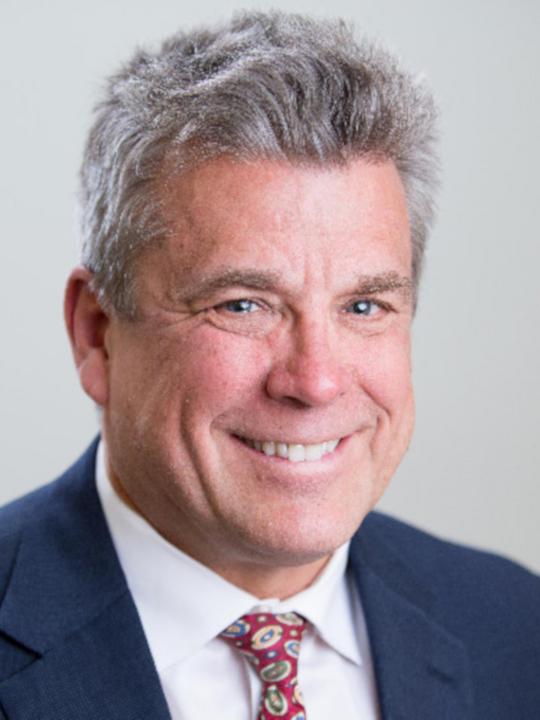
Peter currently leads technology initiatives for the Lovelace Health Division of Ardent Health Services. Prior to this Peter wa the Chief Information Officer for the City of Albuquerque for seven years. During his tenure at the City of Albuquerque, he was responsible for making the City of Albuquerque the #2 ranked Digital City in 2017 as awarded by the Center for Digital Government (five years consecutive in top ten). He has also been named a Top 25 Doer, Dreamer, and Driver by Government Technology magazine and is a Computerworld Premier 100 Technology Leader. Peter resides in Albuquerque where he received his Bachelor’s and Master’s degrees in Information Technology from the College of Santa Fe.
David Campbell, CEO, Mesa Del Sol
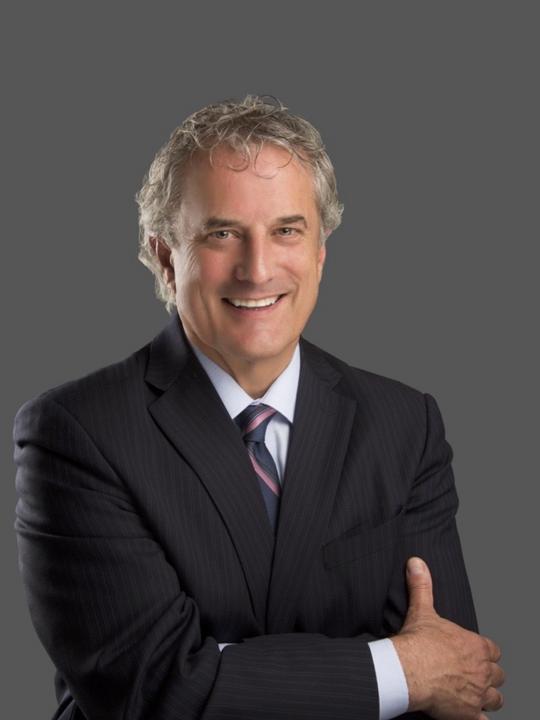
David S. Campbell currently serves as Chief Executive Officer of Mesa Del Sol, LLC, a master planned commercial, industrial, and residential community in Albuquerque, NM. He is a 35-year member of the NM State Bar, practicing municipal and real estate law, in the private and public sectors. Government roles have included serving as Albuquerque City Attorney, Planning Director, and CAO/City Manager. Campbell retired from the U.S. Department of State as a diplomat, having served in Africa and South America, in addition to service as a U.S. Peace Corps volunteer in Africa. He speaks fluent French and Spanish. Graduate of Georgetown University’s Walsh School of Foreign Service, with graduate and law degrees from the University of New Mexico.
Steve Chavez, Mesa Del Sol
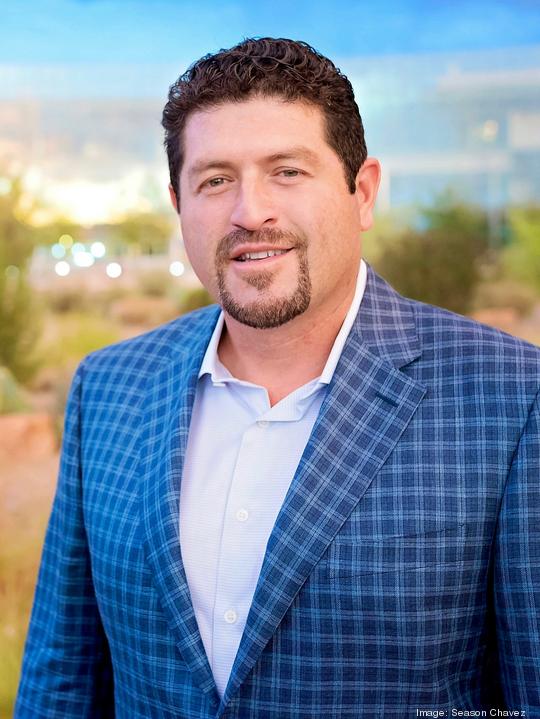
Mr. Chavez is the leadership behind the strength of Mesa del Sol. Beginning with the purchase of his first company in 1995, Integrated Control Systems Inc., Mr. Chavez brings more than 30 years of engineering and construction experience on master-planned projects including government facilities, hospitals, schools, data centers, sports arenas and office complexes.
Today, Chavez holds more than 16 companies and employs more than 400 in the Southwest.
Chavez maintains a hands-on management role within each company while setting the highest standards of training, customer service and project management.
Mr. Chavez is focused and determined to give back to the community that has supported him by making smart development decisions and driving economic change in the State of New Mexico.
Dale Dekker, AIA, AICP, Founding Principal, Dekker/Perich/Sabatini
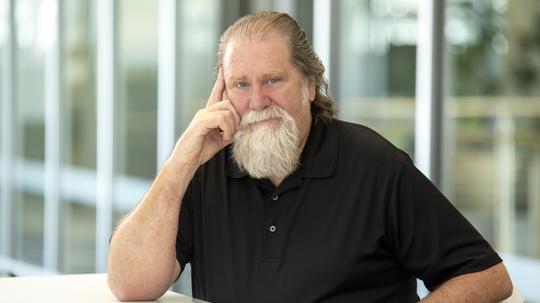
Dale is an original founder of Dekker/Perich/Sabatini (D/P/S). The architecture, engineering and planning firm employs more than 190 people with offices in Albuquerque, Las Cruces, Amarillo and Phoenix.
D/P/S traces the firm’s roots to 1959, when Dale’s father, Art Dekker, Architect and Engineer started his own design and engineering practice in Albuquerque. D/P/S has been recognized locally as the 36th largest private sector business in Albuquerque and is nationally ranked as #140 in Architectural Record’s top architectural firms.
Dale has extensive experience in architecture and planning projects that are socially, economically, and environmentally sustainable. He has contributed to high tech, one-of-a-kind research facilities for Sandia National Labs, award-winning school designs across the Southwest, and large-scale master plans, such as the UNM Master Plan Update. In addition to enhancing communities and quality of life through the built environment, Dale also participates on a variety of boards and commissions dedicated to economic development, education, sustainability, and of particular interest to Dale, water and its use in the urban landscape.
Michael Padilla, New Mexico State Senator
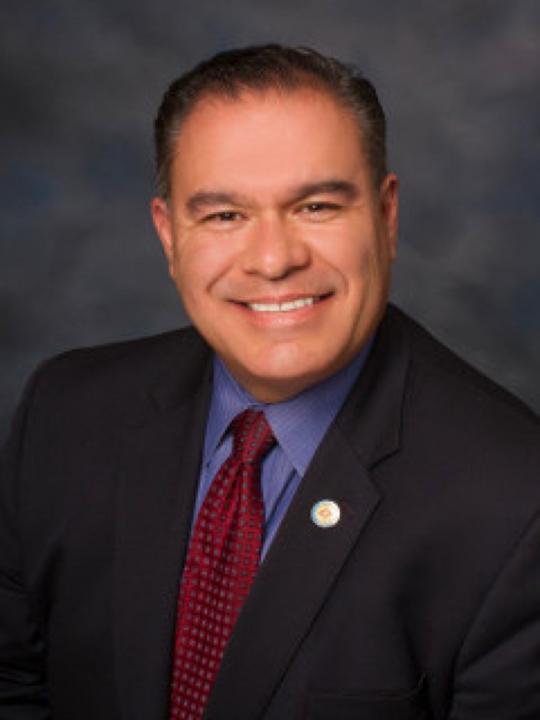
Senator Michael Padilla is a member of the New Mexico State Senate, representing District 14 since January 2013. Senator Padilla was elected to leadership in his second year in office, as the Senate Majority Whip, a position he was reelected to, and held for three years, serves on nine legislative committees, including as the chairman of the science, technology, and telecommunications committee.
Padilla's primary focus as a legislator is to eliminate wide spread poverty that affects most of his state.
Bringing a positive and high energy approach to his role as a state senator, Padilla was the first senator to move a bill through the legislature in his first, second, and fifth years as a senator. Padilla has successfully passed multiple pieces of legislation to improve job creation and economic development, early childhood education, access to high-speed broadband Internet, child food security, child protective services, and education reform and funding.
